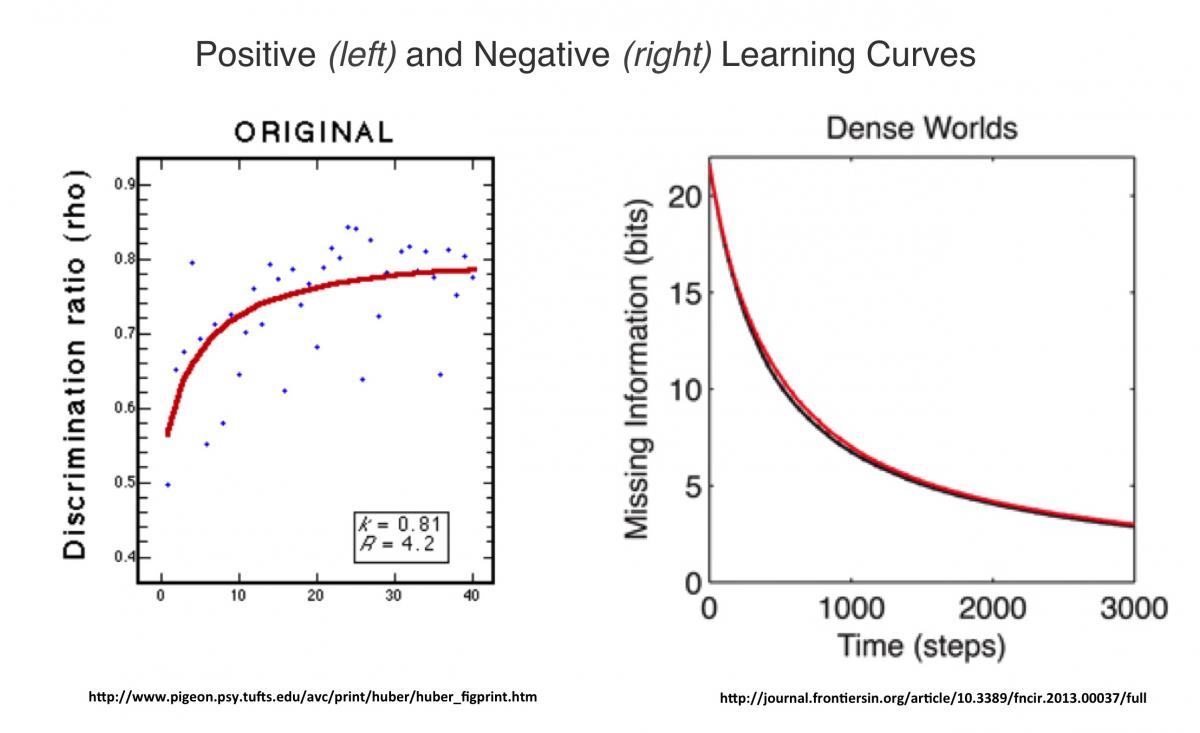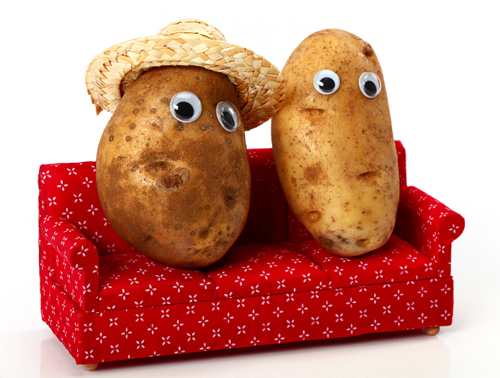The Learning Curve
The learning curve is one of the classic findings of psychology, dating at least to the end of the 19thcentury. Two different learning curves are shown in the figure accompanying this commentary. When some measure of behavior increases across time before reaching a plateau, this is described as a positively accelerating learning curve. If the behavioral measure decreases across time, that is, the mirror image of the positively accelerated learning, behavioral measure describes a negatively decelerating learning curve. An example of the former is, in a given session, the number of parts of a new gymnastics routine performed correctly and of the latter is the number of errors made. These two curves broadly describe many instances of learning of both simple and complicated skills.

Our interest as behavior analysts is in optimizing learning and performance, whether it is in the laboratory, in the classroom or in the workplace. Since most such skill acquisition follows these learning curves, it is useful to consider the kinds of things that influence both the speed and final level of such learning. Broadly speaking, there are two kinds of variables that influence skill acquisition: physical and experiential/environmental, and the two are not necessarily independent of one another.
 The physical condition of the learner obviously is a factor in skill acquisition. A well-conditioned athlete is more likely to reach a higher asymptotic level of performance on some physical task than is Mr. Couch-Potato Dude who rarely exercises and always parks his car as close to the fast-food restaurant as possible so he doesn’t have to walk so far. Another factor, it often is said, is age. We know that learning and performance generally declines with age on tests involving, for example, eye-hand coordination.
The physical condition of the learner obviously is a factor in skill acquisition. A well-conditioned athlete is more likely to reach a higher asymptotic level of performance on some physical task than is Mr. Couch-Potato Dude who rarely exercises and always parks his car as close to the fast-food restaurant as possible so he doesn’t have to walk so far. Another factor, it often is said, is age. We know that learning and performance generally declines with age on tests involving, for example, eye-hand coordination.
What is less than clear is whether the effect is truly a physical decline or something else. Some also might cite intelligence as a limiting factor in learning, but because we don’t know to what extent intelligence is truly physiological/genetic and to what it extent it results from experience, it is dangerous to place limits on people’s learning ability based on something so vague as intelligence, which psychologists don’t understand all that well in the first place. All of these so-called physical variables, in fact, are heavily influenced by experiences and present circumstances.
 Experiential/environmental influences on skill acquisition are far more ubiquitous. If you can do Sudoku puzzles with ease, it probably is because you have a good background in solving math problems, regardless of your age. One behavioral psychologist found big differences in the learning and subsequent performance of a simple task requiring a quick reaction to a visual stimulus between younger and older adults. When, however, he began systematically rewarding faster and faster reaction times by the older adults to the stimulus, guess what? The oldsters and youngsters became almost indistinguishable in their task performance. Thus, by simply rearranging their environments by providing reinforcers for faster reaction times, he dramatically changed performance. The lesson is that the learning curve can be inhibited and enhanced by what we bring to the new learning situation in the form of our unique histories. It also can be affected similarly by what happens in the learning situation, as a huge literature on learning attests.
Experiential/environmental influences on skill acquisition are far more ubiquitous. If you can do Sudoku puzzles with ease, it probably is because you have a good background in solving math problems, regardless of your age. One behavioral psychologist found big differences in the learning and subsequent performance of a simple task requiring a quick reaction to a visual stimulus between younger and older adults. When, however, he began systematically rewarding faster and faster reaction times by the older adults to the stimulus, guess what? The oldsters and youngsters became almost indistinguishable in their task performance. Thus, by simply rearranging their environments by providing reinforcers for faster reaction times, he dramatically changed performance. The lesson is that the learning curve can be inhibited and enhanced by what we bring to the new learning situation in the form of our unique histories. It also can be affected similarly by what happens in the learning situation, as a huge literature on learning attests.
The asymptotic level of the learning curve sometimes defines the minimum standards that have to be met for a person to qualify for an activity, be it participating in the finals of the Summer Olympics’ 400-meter freestyle event or promotion to Sales Manager. The things that contribute to a person’s “final” asymptotic level and to the speed with which different asymptotic levels are reached are equally important, but seem to receive less attention in everyday settings.
 People often think of the asymptotic level that an individual reaches as the person’s limits, as reflecting the person’s so-called capacity. This is a critical point for all of us in positions to bring out the best in others. Don’t think of limits—think about what you can do to arrange conditions for your charges’ continuing gains. Arrange conditions (environment and motivation) and see what behavior does. Be wary of assuming the asymptote is really an asymptote in the absence of experimentation to change it. Research on learning shows us that with different experiences and different arrangements of present circumstances in the here and now, the human potential for new skills is an open question. And that is good news.
People often think of the asymptotic level that an individual reaches as the person’s limits, as reflecting the person’s so-called capacity. This is a critical point for all of us in positions to bring out the best in others. Don’t think of limits—think about what you can do to arrange conditions for your charges’ continuing gains. Arrange conditions (environment and motivation) and see what behavior does. Be wary of assuming the asymptote is really an asymptote in the absence of experimentation to change it. Research on learning shows us that with different experiences and different arrangements of present circumstances in the here and now, the human potential for new skills is an open question. And that is good news.



